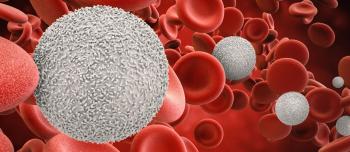In November 2011, the BloodCenter of Wisconsin announced that its Hemostasis Reference Laboratory has added three new assays (tests) for von Willebrand disease (VWD). A series of diagnostic assays is typically used to determine whether an individual has VWD and confirm the type.
VWD and its subtypes are characterized by either quantitative defects (decreased amount) or qualitative defects (abnormal structure or function) in von Willebrand factor (VWF). Bleeding symptoms can be mild, moderate or severe, depending on the type. Types I and III result from quantitative defects, either partial VWF production or a lack of it; type II and its subtypes result from dysfunctional VWF. A patient history of bleeding symptoms, plus the presence of VWD in other family members, is part of the diagnostic criteria. In addition, a battery of lab tests measuring VWF quantity and function can confirm the diagnosis.
Most VWD tests screen for quantitative and/or qualitative defects in the VWF. The new tests complements the BloodCenter’s existing battery of assays, the most comprehensive VWD testing available in the U.S. The new tests are:
- The “VWF Quantitative Multimer” assay, which yields quantitative information on the severity of the specific abnormalities in VWF. According to the BloodCenter press release, this test also acts as a new research tool for evaluation of patients with acquired defects of VWF, such as those with heart disease being treated with a ventricular assist device.
- The “VWF D1472H Ristocetin-Binding Polymorphism,” which affects a current commonly used test that evaluates VWF function--the VWF:Ristocetin Cofactor (VWF:RCo) assay. The D1472H variation of the VWF gene interferes with this test, resulting in an inaccurate measure of VWF function. This genetic variation is carried by 63% of African Americans and 17% of Caucasian Americans. The new test allows identification of these people, promoting accurate patient diagnosis.
- “VWF Full Gene Sequencing,” which enhances the BloodCenter’s strength in genetic diagnosis of VWD. Patients with a quantitative deficiency of VWF are at increased risk for bleeding. Many of these patients have low VWF levels due to defects of their VWF gene.
“It is very rewarding to see a basic and clinical research finding translated into new clinically relevant testing that offers patients the opportunity for improved clinical care,” said Robert Montgomery, MD, senior investigator at the BloodCenter and the Blood Research Institute.





